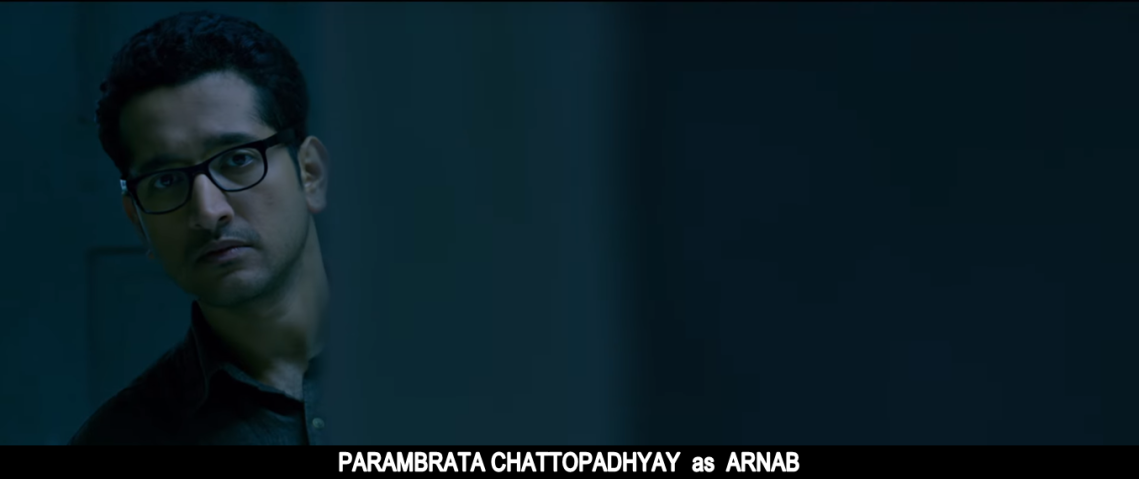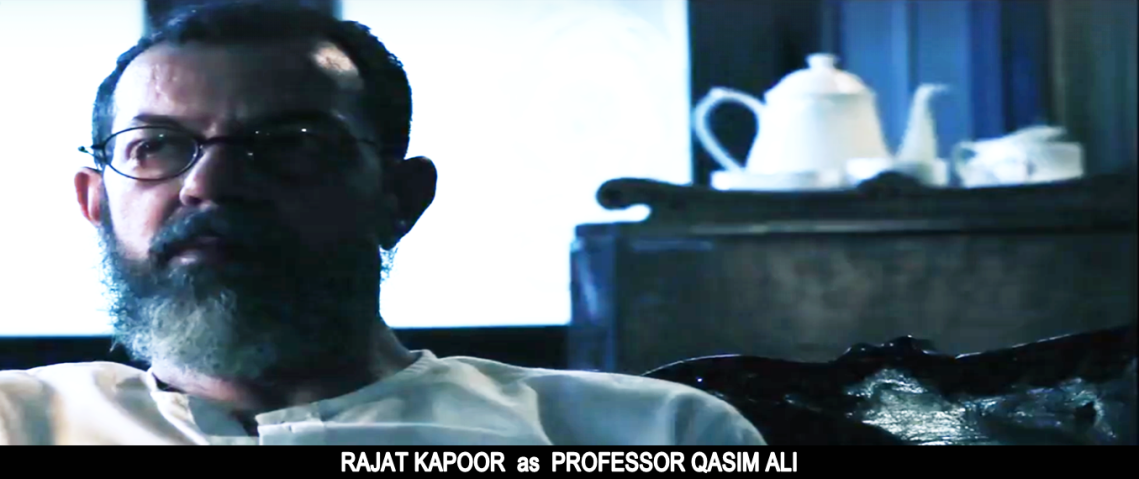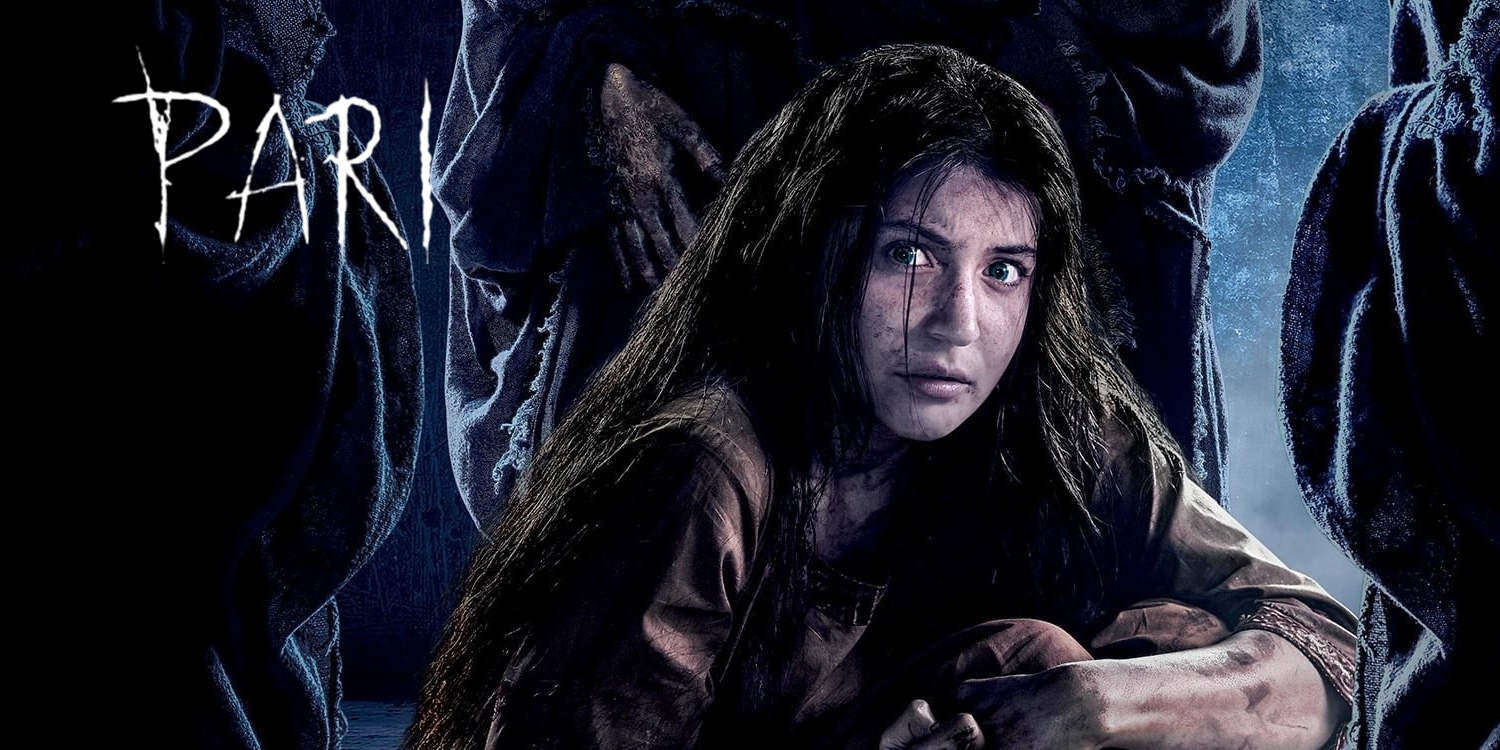Pari
Occult and black magic and the works have fascinated me for quite some time. I’ve even tried planchette twice, but that didn’t result in much. My mother had forbidden me at the time from reading up about such stuff on the internet, which made the interest in it keener. I still haven’t gotten around to reading up on it but films on the subject are usually quite interesting.
Pari opens with Arnab and Piyali meeting in an arranged marriage setup. Later, as Arnab and his parents are driving home, they run over a woman in a burqa. The accident leads to the discovery of the victim’s daughter Rukhsana, who is found chained in the shack in the woods where she lived with her mother. Arnab, feeling guilty, shelters Rukhsana. The film then jumps across the Sunderbans to Dhaka, where Professor Qasim Ali – a man who hunts down the progeny of Ifrit – is told about the accident, causing him to go to Calcutta with his minions and look for Rukhsana.
Kudos to director Prosit Roy and his DP Jishnu Bhattacharjee for the Fincheresque look they create. They use Calcutta as a character like Sujoy Ghosh and Dibakar Bannerjee did but in a very different way. There is no shot of Victoria Memorial, no tram, no Communist flags. In fact, the distinct taxi is the only real revelation that the city is Calcutta. The monsoon adds a lovely touch to the proceedings. The colours are stripped down, with blue and green hues dominating the frames. The lighting is also quite remarkable. Production designer Meenal Agarwal opts for minimalistic setting up and the way Arnab’s apartment is done up is quite in tune who he is. There are barely any showpieces, the sofa set is pretty simple, the TV is old, the curtains are a mixed bag that he seems to have taken from his parents’ home. The other locations, namely the morgue and the Professor’s “workshop” are exactly how one would expect them to be.
In her Hindi film debut, Ritabhari Chakraborty is pleasant, though there isn’t much for her to do in the film. It’s a poorly-written character and sadly not the only one in the film.
 Parambrata Chattopadhyay also has little to do apart from being permanently perplexed and on edge, but he still manages to make something of his character. It’s a real waste of the man’s talents.
Parambrata Chattopadhyay also has little to do apart from being permanently perplexed and on edge, but he still manages to make something of his character. It’s a real waste of the man’s talents.
 Rajat Kapoor is terrific as the one-eyed Professor. He is an actor one gets to see rarely, but when he does appear, he leaves a mark. His turn as the father/son/husband going through a midlife crisis in Kapoor & Sons is still fresh in my memory. As the “antagonist” of the film (even though the term isn’t probably the right one to describe Qasim Ali), Rajat is creepy yet human.
Rajat Kapoor is terrific as the one-eyed Professor. He is an actor one gets to see rarely, but when he does appear, he leaves a mark. His turn as the father/son/husband going through a midlife crisis in Kapoor & Sons is still fresh in my memory. As the “antagonist” of the film (even though the term isn’t probably the right one to describe Qasim Ali), Rajat is creepy yet human.
 Anushka Sharma pulls out the stops with her act and is interesting to watch. It takes courage and a certain lack of vanity to look and dress the way she does in the film. It is probably her first performance since her debut production NH10 that really tests her acting chops which, while proven, have rarely come to fore since she has been repeatedly cast into the “bubbly girl” mould Preity Zinta was overused in a decade ago. Anushka imbues Rukhsana with an endearing innocence and elevates the character in the scenes where she loses it.
Anushka Sharma pulls out the stops with her act and is interesting to watch. It takes courage and a certain lack of vanity to look and dress the way she does in the film. It is probably her first performance since her debut production NH10 that really tests her acting chops which, while proven, have rarely come to fore since she has been repeatedly cast into the “bubbly girl” mould Preity Zinta was overused in a decade ago. Anushka imbues Rukhsana with an endearing innocence and elevates the character in the scenes where she loses it.
The film’s writing is its greatest weakness. It is lacklustre. Roy and co-writer Abhishek Bannerjee throw in Satanic practices, witch-hunting, the Bangladesh Liberation War and all sorts of stuff to make the film work, but the script is just too thinly-spread. There are scenes which seem random and there just isn’t enough togetherness here. Characters are not well-etched. That said, there are some touching moments with Anushka at the centre of events and some creepy ones with Rajat holding fort.
 Prosit Roy has – like debutants Ranjit Tiwari (Lucknow Central), Abhay Chopra (Ittefaq) and Milind Rau (The House Next Door) last year – an eye for detail and a sense of atmospherics. The film looks great, but the horror just isn’t there. There are a few jump scares and tense scenes but neither are they enough in number nor is their impact enough for the film to fit into the horror genre. I rolled my eyes in a scene which is clearly lifted from Jordan Peele’s Get Out. Roy has a compelling story to tell but seems afraid to edit out chunks of it. It’s more of an occult-ish thriller than a true-blue horror film. The horror is further dialled down by putting in Ritabhari’s character, whose purpose in the film could’ve been conveyed through another character. That said, Roy does seem to pull off the gory scenes unflinchingly (the scene in which Rajat Kapoor pulls out his ocular prosthesis and pops it into a beaker is fascinatingly filmed) and the “message” he wants to convey through the film is smartly put across.
Prosit Roy has – like debutants Ranjit Tiwari (Lucknow Central), Abhay Chopra (Ittefaq) and Milind Rau (The House Next Door) last year – an eye for detail and a sense of atmospherics. The film looks great, but the horror just isn’t there. There are a few jump scares and tense scenes but neither are they enough in number nor is their impact enough for the film to fit into the horror genre. I rolled my eyes in a scene which is clearly lifted from Jordan Peele’s Get Out. Roy has a compelling story to tell but seems afraid to edit out chunks of it. It’s more of an occult-ish thriller than a true-blue horror film. The horror is further dialled down by putting in Ritabhari’s character, whose purpose in the film could’ve been conveyed through another character. That said, Roy does seem to pull off the gory scenes unflinchingly (the scene in which Rajat Kapoor pulls out his ocular prosthesis and pops it into a beaker is fascinatingly filmed) and the “message” he wants to convey through the film is smartly put across.
Pari is worth your time if you are willing to be patient with it and if you don’t expect it to be a horror film, because it isn’t one. It has an interesting premise and the treatment is unique, plus there is Anushka Sharma in an avatar and with a performance not many of her peers could have pulled off.


Hi, no A’s and B’s and E’s for this film?
The review is brilliant though
LikeLike
None. Felt that summing it up in numbers or an alphabet kind of ruins the point of a 1000-word piece. And thank you.
LikeLike
Very well described. The finesse in your reviews is going up. Keep on.
LikeLike
Thank you, ma’am.
LikeLike